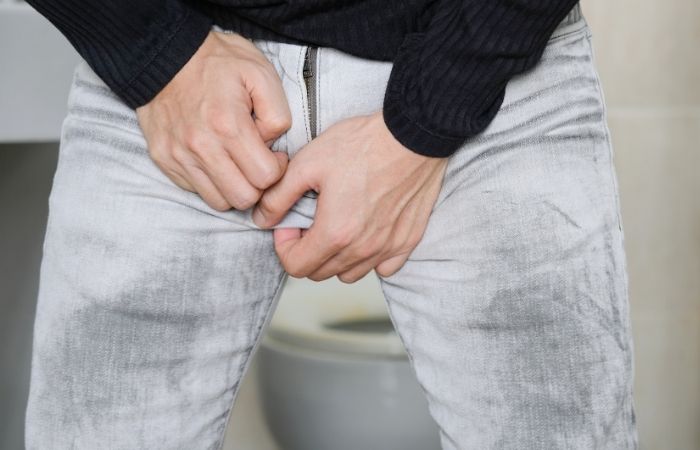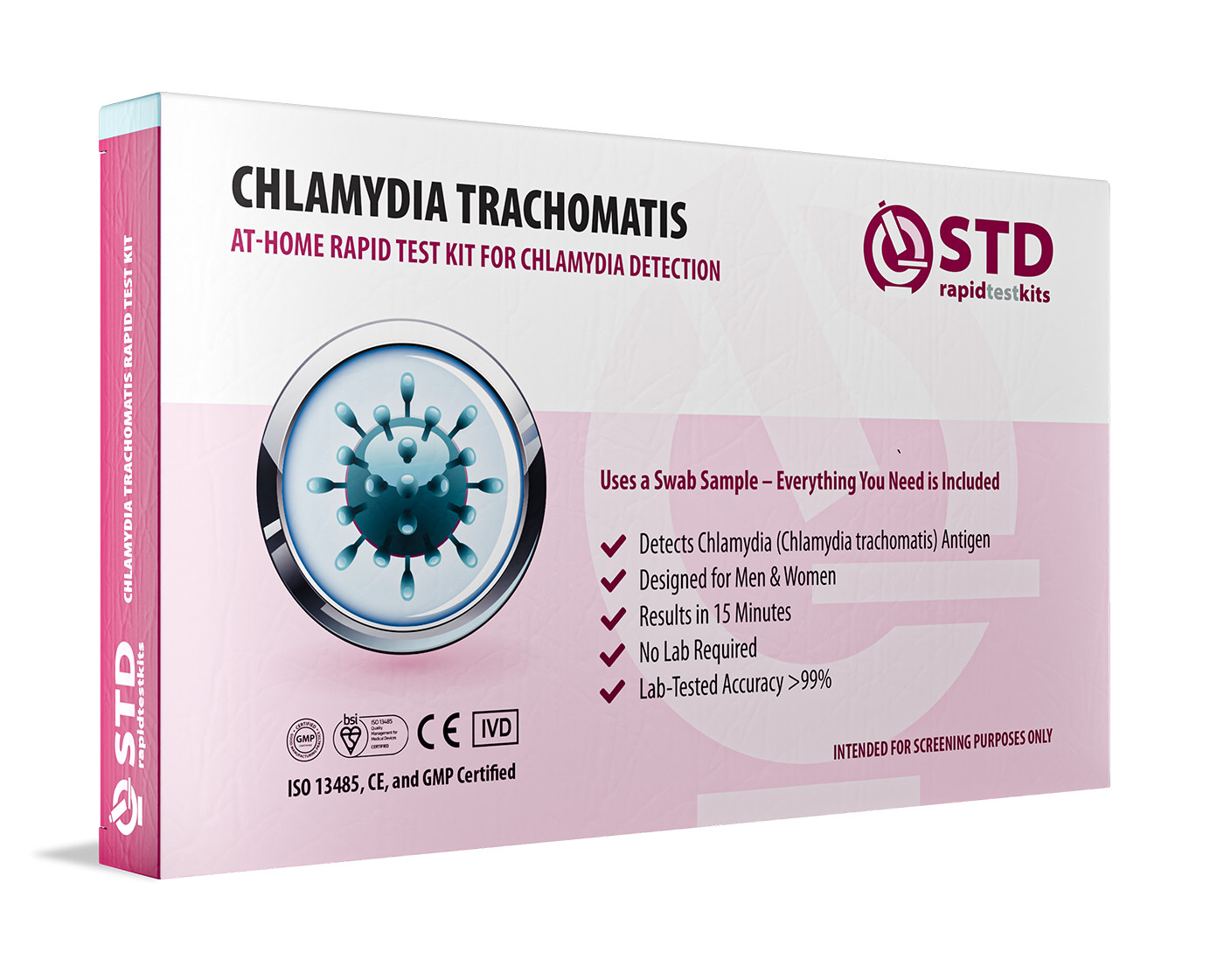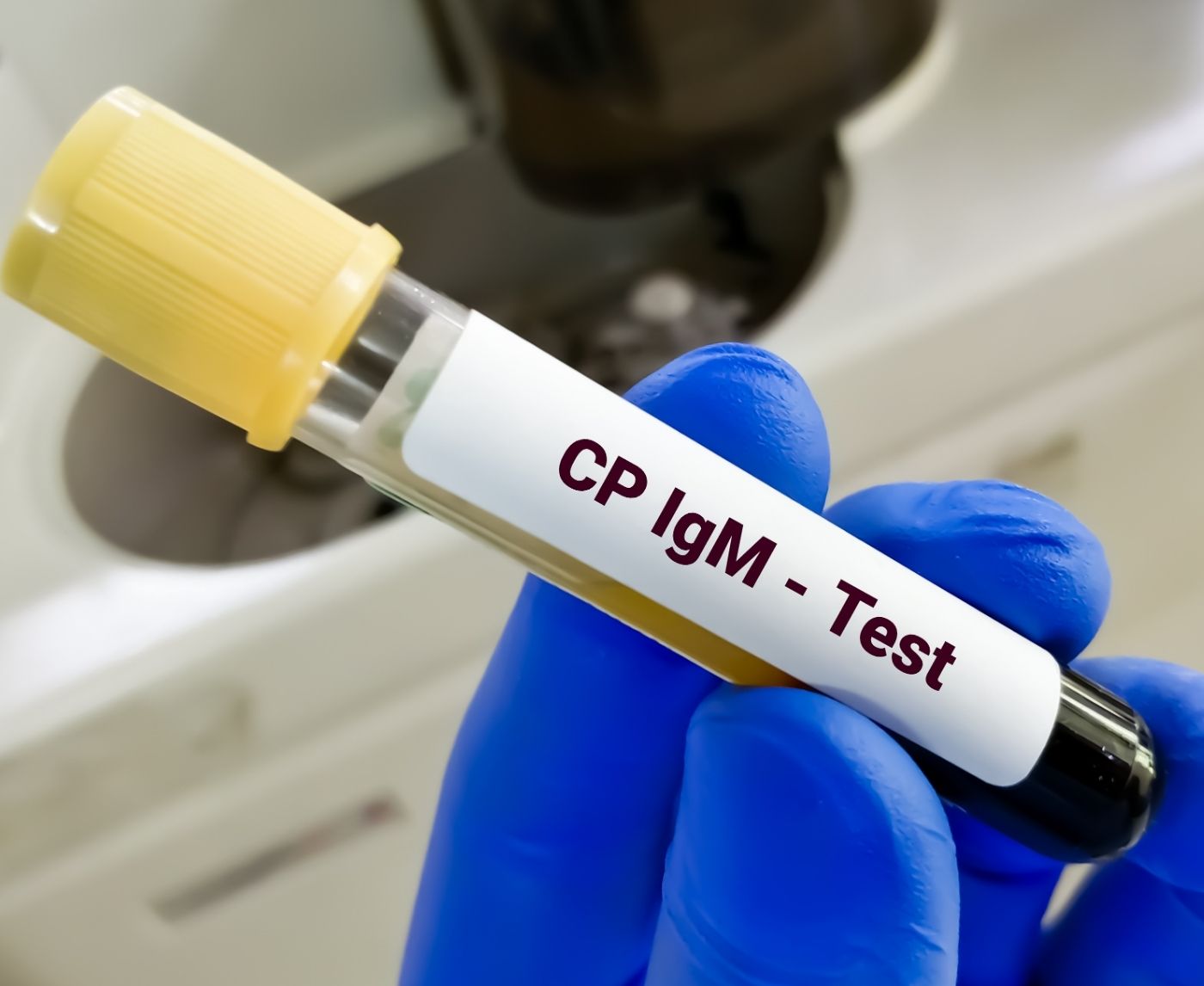The Future of STD Testing: How At-Home Kits Are Changing the Game
Why Chlamydia Screening Is More Serious Than You Think
Chlamydia is caused by the bacterium Chlamydia trachomatis and is spread through vaginal, anal, or oral sex. Easily treated with antibiotics, if not treated, chlamydia can lead to serious complications, including pelvic inflammatory disease (PID), infertility, chronic pain, and an increased risk of HIV.
The World Health Organization (WHO) puts more than 129 million new chlamydia infections per year worldwide. No typo there. And the U.S. Centers for Disease Control and Prevention (CDC) says it is the most commonly reported bacterial STI in the nation. But the majority of the infections are not detected because they are symptomless.
If you believe that's a problem for "somebody else," think again. Chlamydia doesn't discriminate. It infects men and women, independent of racial or ethnic backgrounds, and in all ages—not merely the usual 15-to-24 years old.
Screening is the only method of preventing the silent spread through early detection. And with the introduction of newer options like home chlamydia testing kits, it is now more convenient and private than ever.

The Top Reasons You Should Get Tested for Chlamydia
Early Detection Saves Fertility
Untreated chlamydia can cause reproductive damage. In women, it can cause fallopian tube damage and irreversible sterility. In men, it results in epididymitis—painful swelling near the testicles. Early diagnosis is synonymous with early treatment—and no irreversible damage.
Prevents Transmission to Partners
Screening prevents the transmission of chlamydia to sexual partners. If you are infected and do not know it, you may be part of an unknowing chain of infection. Being tested breaks the chain.
Safeguards Pregnancies and Infants
Chlamydia is transmitted from mother to infant during delivery and can cause pneumonia or eye infection in infants. Testing for pregnancy ensures early intervention and protection for mother and infant.
Decreases STI-Associated Stigma
Being proactive with STI testing normalizes it. The more individuals get tested and discuss it, the more we fight shame and silence.
Availability Threshold for In-Home Testing Options
Due to accurate home chlamydia testing kits, you can now get screened anonymously, without visiting a clinic. Results are fast, private, and usually just as reliable as face-to-face laboratory tests.
Check Your STD Status in Minutes
Test at Home with RemediumChlamydia Test Kit

 For Men & Women
For Men & Women Results in Minutes
Results in Minutes No Lab Needed
No Lab Needed Private & Discreet
Private & DiscreetOrder Now $33.99 $49.00
The Actual Risks: Why You Should Not Miss Screening
You Could Be Infected Unbeknownst to You
As many as 70% of women and 50% of men with chlamydia have no symptoms. It doesn't necessarily mean you're fine just because you feel fine.
It Spreads Easily—Even Without Intercourse
Chlamydia can be transmitted by oral sex, sex toys shared between partners, and even occasionally through contact with infected fluid. Condoms are helpful, but nothing can be 100% certain.
Delayed Diagnosis = Long-Term Damage
Untreated, chlamydia can result in PID, ectopic pregnancy, pelvic pain, and sterility in males. All these risks increase exponentially the longer the infection goes undiagnosed.
Reinfection Is Common
Even if you've been treated previously, you can still become infected again. Reinfection is common and typically occurs when partners are not tested or treated at the same time.
There Is Still a Global Testing Gap
Access to chlamydia testing differs vastly across the globe. Lack of services, stigma, or simply not being aware that a test is needed stops many individuals from taking one. Home testing kits are beginning to tackle this disparity but at low levels of awareness.

Safe, Easy, and Private: How to Get Tested
Tests for chlamydia are more available than ever. You can have a test at:
- Clinics and hospitals (with a health care provider)
- Community health centers
- Home STD testing kits (shipped to your home)
Types of Tests
Urine test – Most common and non-invasive
Swab test – For throat, rectum, cervix, or urethra, as applicable to the exposure
Who Should Be Tested?
- Sexually active women aged below 25 (per year)
- Women over 25 with new or multiple partners
- Gay, bisexual, and other men who have sex with men
- Individuals with a history of STIs
- Pregnant women
- Anyone who has symptoms—or whose partner has tested positive
It takes under 10 minutes and could spare you years of reproductive ill health.
Check Your STD Status in Minutes
Test at Home with Remedium3-in-1 STD Test Kit

 For Men & Women
For Men & Women Results in Minutes
Results in Minutes No Lab Needed
No Lab Needed Private & Discreet
Private & DiscreetOrder Now $69.00 $147.00
For all 3 tests
Case Studies & Real-Life Experiences
Case Study 1: Maya, 22, U.S.
I only got tested because my friend nagged me into doing it. I had absolutely no symptoms—but tested positive. I'm so glad I caught it early. I had no clue it could impact fertility. I did a home test, and it was quick, simple, and actually sort of empowering.
Case Study 2: Daniel, 28, UK
“I noticed some discomfort while peeing but ignored it. A month later, my partner tested positive. I felt awful. The guilt pushed me to get screened. We both got treated, and now we test regularly, just like we do with physical checkups.”
Case Study 3: Anaya, age 31, India
I did not know anything about chlamydia testing until I came across it online. It is embarrassing to have a sexual health clinic test done in my own city. I purchased a home test that was discreetly mailed, and it was an eye-opener.
Statistical Facts: Chlamydia by the Numbers
Global Prevalence Is Staggering
It's estimated by the World Health Organization (WHO) that chlamydia results in more than 129 million new cases globally every year. In the United States alone, there were more than 1.6 million reported cases in the year 2021, and that is probably an underestimate since there are carriers who are asymptomatic.
- Young people are disproportionately affected
- Nearly two-thirds of the reported cases in America are in the age group of 15–24 years.
- A mere 1 in 10 sexually active adolescents are tested every year.
- Women are diagnosed because of regular gynecological checkup, whereas men remain undiagnosed, fueling silent transmission.

At-Home Testing Is Rising
One 2023 research article published in the Journal of Adolescent Health indicated that home STD testing kits boosted screening rates by 35% among individuals aged 18-30 years, particularly in rural regions.
Reinfection rates are high
One Canadian study discovered that almost 20% of individuals treated for chlamydia were reinfected within one year—frequently by untreated partners.
What the Professionals and Ordinary People Are Saying
Dr. Amina Yusuf, Infectious Disease Specialist
"Individuals believe chlamydia is not serious because it can be treated, yet if left untreated, it can lead to permanent damage. We have to normalize getting tested like we normalize dental cleaning or eye examinations."
Case Study: Carlos, 34, Argentina
"I was surprised to find out I had chlamydia when I went in for another check-up for something else. My doctor told me it was lucky I came in, or I could have passed it on without realizing. Now I'm telling all my friends to go get checked out, even if they're okay."
WHO STI Programme
We need to close the global testing gap. In most nations, access is restricted and stigma is widespread. Home-based, affordable testing is key to better public health results.
How Did We Get Here?
- Pre-1970s: Chlamydia was not widely recognized and usually misdiagnosed.
- 1980s: Tests with greater precision were created, primarily for clinical applications.
- 1990s–2000s: NAAT (nucleic acid amplification tests) emerged as the gold standard—very sensitive and very specific.
- 2010s–2020s: Home STD testing became more popular, which raised privacy and convenience.
- Today: Screening recommendations have broadened, and more individuals are talking openly about STIs—but stigma and access are still barriers to prevention.
Check Your STD Status in Minutes
Test at Home with Remedium6-in-1 STD Test Kit

 For Men & Women
For Men & Women Results in Minutes
Results in Minutes No Lab Needed
No Lab Needed Private & Discreet
Private & DiscreetOrder Now $119.00 $294.00
For all 6 tests
The Future of Chlamydia Screening: What's Next?
- Digital Health Integration: Telemedicine and health apps will probably provide effortless ordering of home kits and direct result monitoring.
- Self-sampling technology: Saliva and finger-prick tests are being developed to reduce testing even more.
- Global Outreach Campaigns: Governments and NGOs are concentrating on education campaigns to reach out to underprivileged populations.
- Routine Health Integration: As regular cholesterol or blood pressure checks, regular chlamydia screening would be included as a component of yearly health check-ups globally.
How You Can Use This in Everyday Life
For Yourself
- If you’re sexually active, especially under 25, make screening a yearly habit.
- Order an at-home test kit if you are not comfortable with office visits.
- Watch for signs—but don't wait for them to appear to be tested.
For Your Partner(s)
- Promote testing together prior to becoming sexually active.
- Always use protection, even during oral and anal intercourse.
- Share results freely—it is all about building trust.
For Your Community
- Share this article to raise awareness.
- Talk freely to minimize shame and misinformation.
- Market existing test services where they are not available.

Chlamydia's Effect on Healthcare and Beyond
- Healthcare Costs: Untreated chlamydia results in costly complications, such as surgeries to cure PID or infertility treatments.
- Work Productivity: Reproductive health complications and chronic pain caused by STIs can decrease work productivity and cause absenteeism.
- Maternal Health: Chlamydia untreated endangers prenatal health and newborn survivability, so early diagnosis is a maternal health priority.
- Mental Health: Fear of unknown or untreated STI diagnosis and stigma can cause tension, guilt, and anxiety.
Real Talk: Real Stories that Reach Out
Leah, 27, Australia
"I discovered my ex had chlamydia, so I got tested despite having no symptoms. I cried when it came back positive—not out of fear, but because I felt dirty. My doctor said it's really common and really easy to treat. That chat was a total game-changer for me."
Noor, 19, Malaysia
"There's no open sex ed where I am. I ordered a test online secretly. It was negative, but it made me feel better. Now I'm trying to initiate a student awareness group on campus."
Common Myths Regarding Chlamydia Testing—Busted
1. "If I'm not experiencing symptoms, I don't need to test."
Incorrect. Most individuals with chlamydia are asymptomatic.
2. "Only individuals with many partners get it."
Nope. It takes just one unprotected encounter.
3. "You can't get it from oral or anal sex."
False. The throat and rectum can also be infected by chlamydia.
4. "It'll go away on its own."
It will not. Chlamydia requires antibiotics to cure it.
5. "Home tests are not accurate."
They do. They use the same lab techniques as clinics.
6. "Testing is costly and challenging."
Most health departments and websites provide free or low-cost kits.
7. "Men don't need to test unless they have symptoms."
Men are also asymptomatic. Screening saves all.
8. "If I'm in a relationship, I'm safe."
Not necessarily. Get tested with each new partner—even in monogamous relationships.
9. "Testing is embarrassing."
It's health. And you ought to be proud to take control of your health.
10. "I was treated, so I cannot get it again."
You can. Reinfection is likely, particularly if your partner was not treated.

FAQs
1.- How often should I have a chlamydia test?
If you're sexually active and under 25, get tested once a year. If you have more than one partner, get tested more often.
2.- Is it possible to test for chlamydia at home?
Yes. Home test kits enable you to collect samples privately and send them to a lab.
3.- How long does it take to receive chlamydia test results?
Clinic results are 1–3 days. Home kits typically take 5–7 days after mailing.
4.- Which type of sample is needed to test for chlamydia?
Typically urine or vaginal/cervical/rectal swab, depending on exposure.
5.- Is the test painful?
No. The majority of tests are painless and fast.
6.- Can men get at-home chlamydia tests?
Yes. Men can have a urine sample or rectal swab checked.
7.- Is chlamydia treatable?
Yes, with a short course of antibiotics.
8.- Am I required to inform my partner if I test positive?
Yes. It is necessary that they also get tested and treated to avoid reinfection.
9.- Do I need to avoid sex if I am HIV positive?
Yes—at least 7 days after treatment or until your doctor tells you it is safe.
10.- Are my results confidential with at-home testing?
Yes. Results are privately and securely returned.
Time to Act: Safeguard Yourself and Others
Taking a chlamydia test is not some kind of medical drudgery—it is a mark of self-regard and maturity. It reflects concern for your body and the body of anyone with whom you have sex. The best part? It's easier than ever.
Whether you visit a clinic or utilize an at-home STD testing kit, it's easy, private, and liberating. And if you learned something today, share this post with others.
Empower someone else to make an empowered decision, decrease stigma, and care for their own well-being.
Sources
1.- Chlamydia – CDC Fact Sheet (Detailed)
2.- Chlamydia – Symptoms & Causes (Mayo Clinic)
3.- Sexually Transmitted Infections (WHO)
4.- Prevalence of Chlamydia trachomatis in Asymptomatic Individuals (PubMed)










